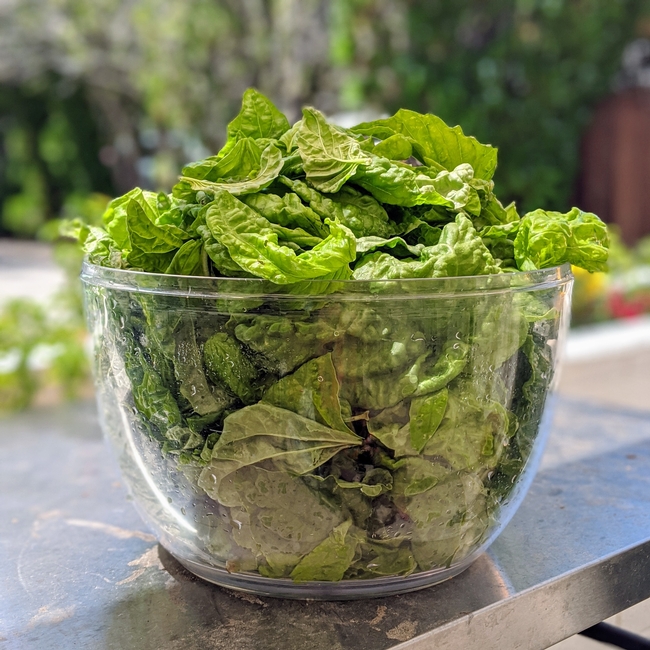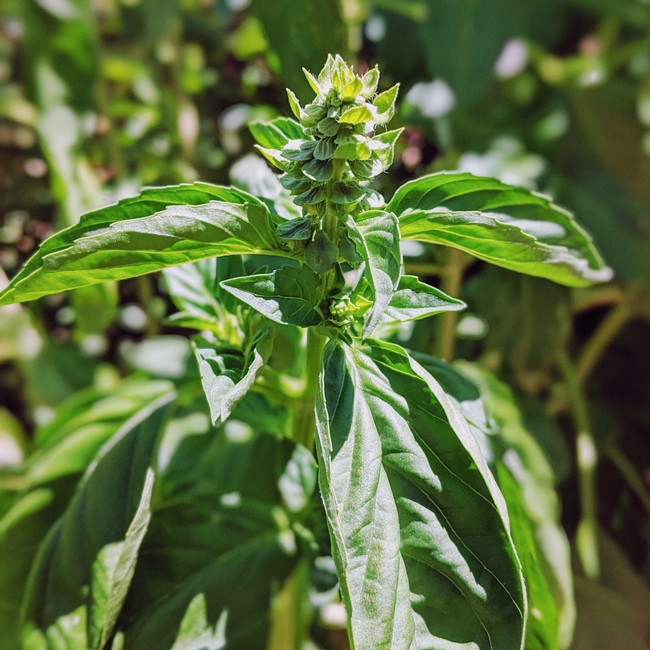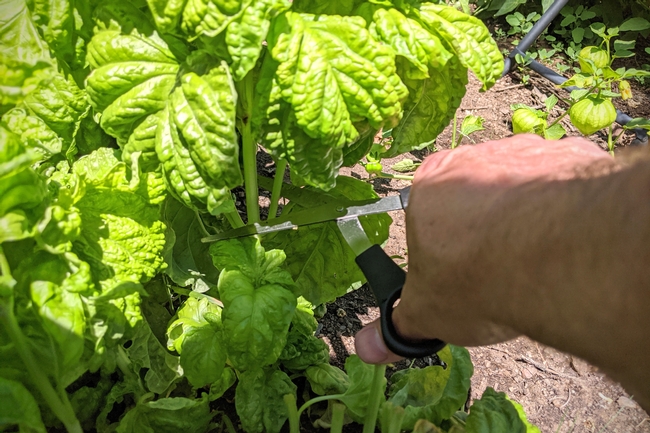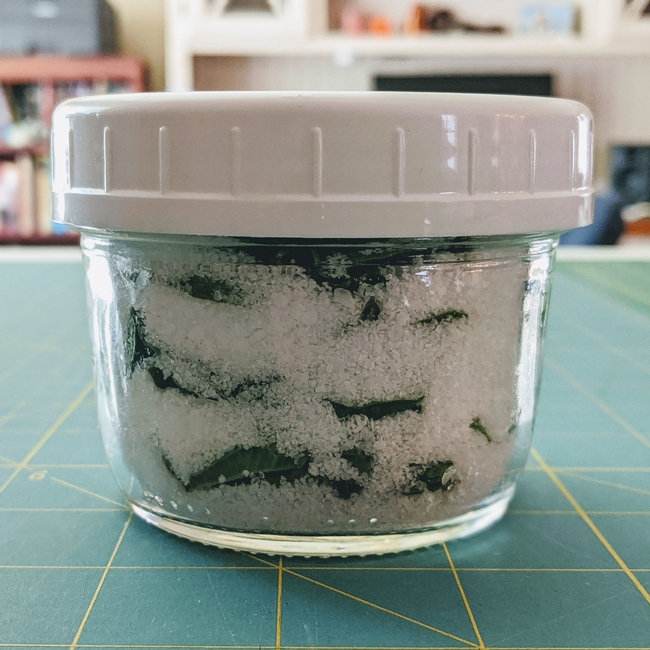Basil is one of my favorite things to grow in the garden. It's easy, mostly pest-free, and best of all: I like it.
I usually go overboard and grow more than one kind of basil in the garden. This year I grew sweet basil, Thai basil, and ‘Mammoth' lettuce-leaf basil.
If you don't raise lettuce-leaf basil, you should consider it for next year. Lettuce-leaf basil is really fast to de-stem for processing which is great for lazy folks like me. ‘Napoletano' is my absolute favorite basil, but it was out-of-stock everywhere this year, so mild-tasting ‘Mammoth' it was.
Although I use fresh basil regularly, I never seem to make a huge dent in my garden's supply because I grow more than I should. Eventually the plants will begin to flower around mid-July. Each type of basil flowers at a different time and previous harvesting will also affect when it flowers.
An efficient time to harvest basil is just as the flower spikes begin to be visible, but aren't fully expanded. The plants will have lots of leaves ready to be used and the flavor is still good.
Today was basil harvest day in my garden, but I probably should have started last week.
I usually dry all my sweet basil, and use the Thai and lettuce-leaf basils fresh, but this year I had a lot of lettuce-leaf basil ready to harvest all at once so I had to preserve some. After drying and freezing, I still had some left to use up. So I went to my backup preservation plan: salt drying.
Salt drying relies on salt to draw out moisture to preserve herbs. Since there is no heat involved, the delicate aroma of the herbs is not as affected as by dehydrating. Any herb can be salt dried, but I'm not sure that's a good idea for every herb. I can't imagine finding a use for salted mint.
To salt dry basil, use a clean, wide-mouth jar. Put some salt in the bottom and alternate layers of washed, dried basil leaves and salt. I use kosher salt, but use whatever suits your fancy. (Remember, the basil will overpower any flavor subtleties of expensive specialty salts.) Sometimes I put a few peppercorns or fennel seed in the salt too. After filling the jar, store it in the refrigerator and it will keep for months.
Whenever you need some basil, pull out some leaves and add them to your recipe, adjusting salt if desired. When you are finished using all the leaves, you are left with a basil-flavored salt, also handy in the kitchen!
I've found that this method is very good with Thai or holy basils. I can pull the leaves out and add them to sauces. They do a good job retaining their distinct flavor this way. The small leaves fit well into the jar to make neat layers. This year I used the small leaves toward the top of my lettuce-leaf basil plants. The ruffles made it a little harder to place into the salt, but it worked if I packed it all down between each layer. I probably didn't get as much basil in the jar as with Thai basil as a result.
I am thankful that basil is so easy to preserve since I'm always swimming in it by mid-summer. Good thing it's something I actually use, unlike the radishes I plant for no apparent reason.
P.S. Before you ask: No you cannot safely can basil at home, even with a pressure canner.



